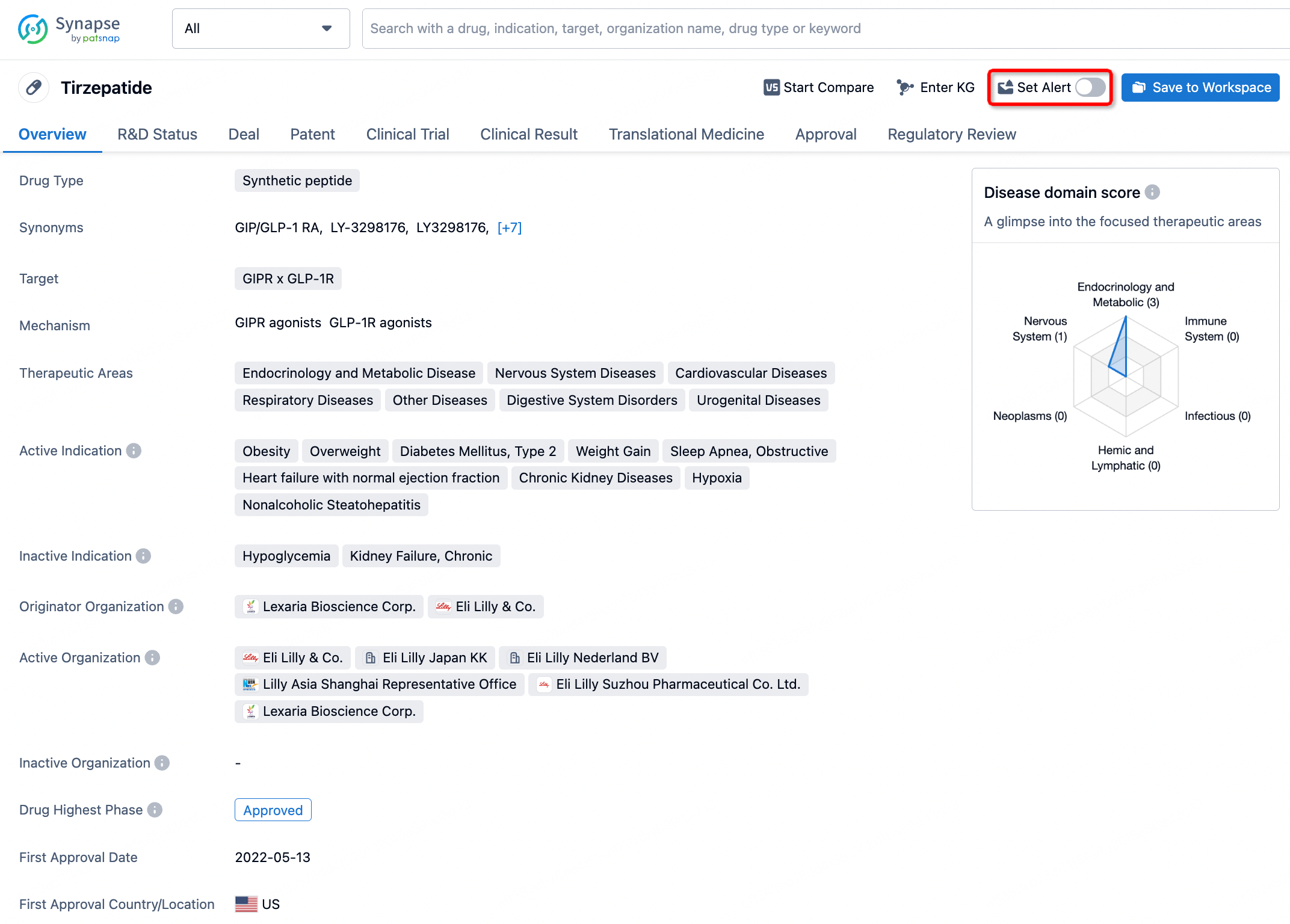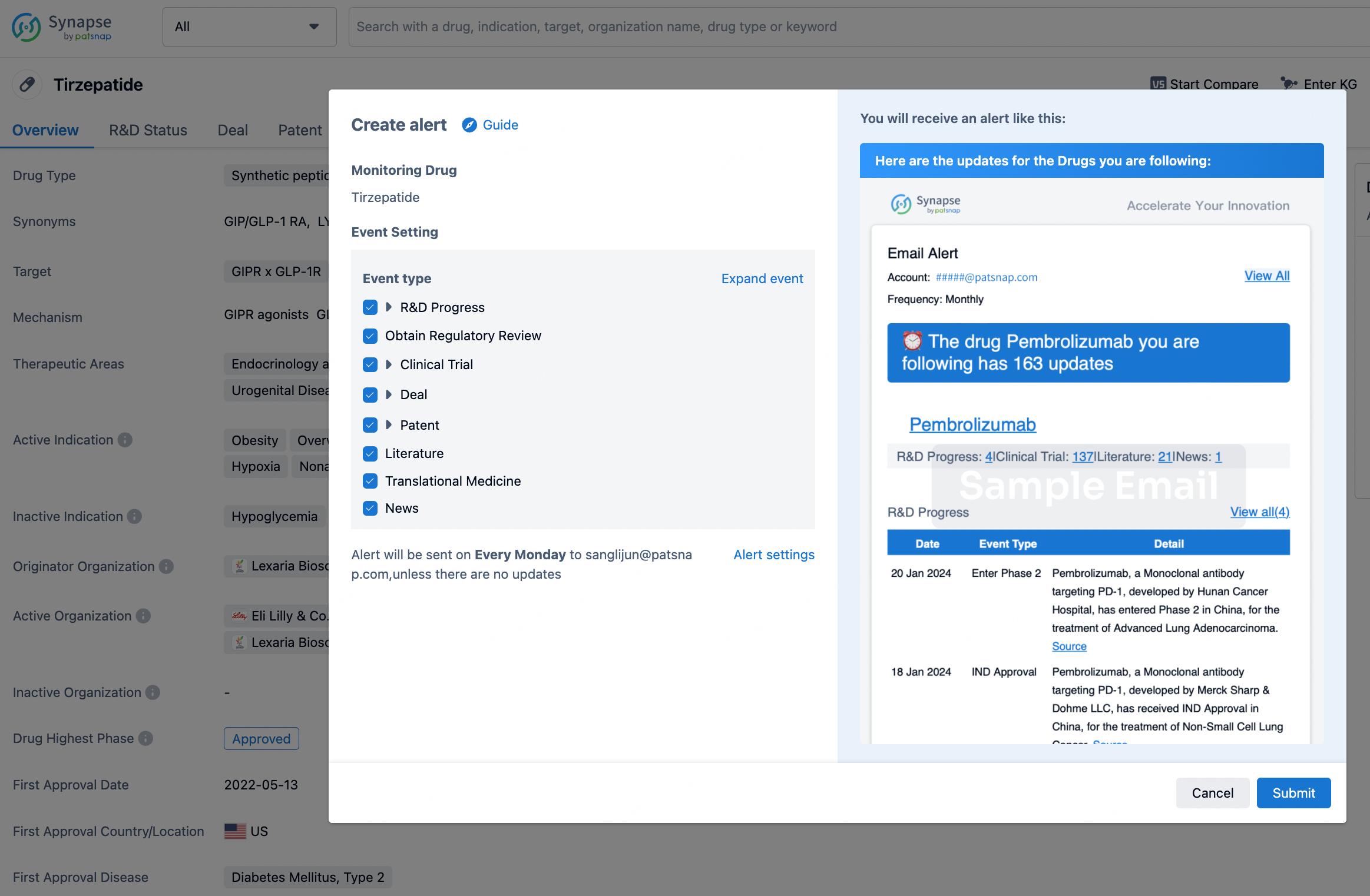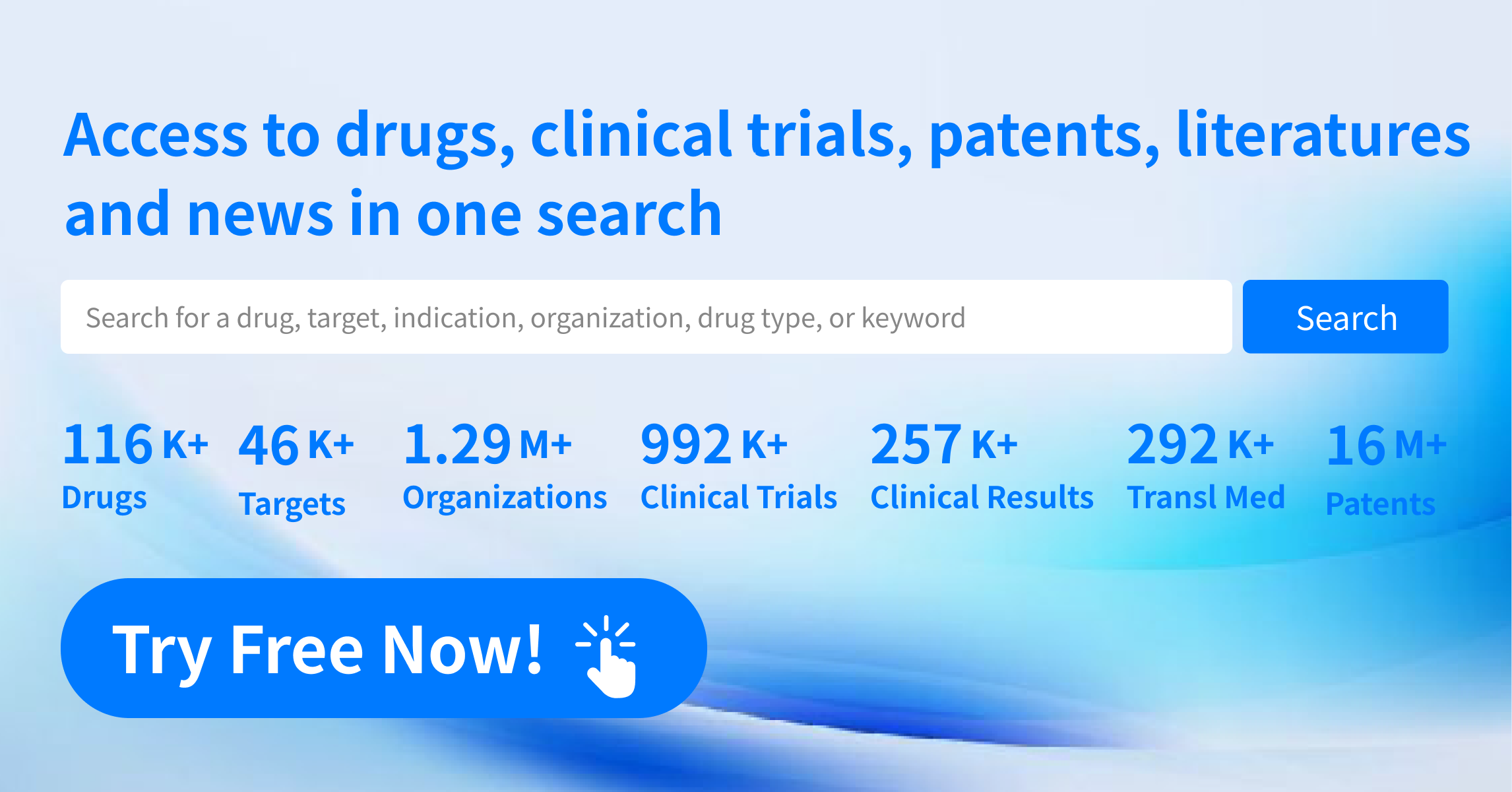Request Demo
What is Hydrotalcite used for?
14 June 2024
Hydrotalcite is a fascinating compound with a unique set of properties that make it a subject of interest in various medicinal and industrial applications. Originally discovered as a naturally occurring mineral, hydrotalcite has since been synthetically produced and harnessed for its diverse potential. This post will delve into the nature of hydrotalcite, exploring its mechanism of action, proper usage, potential side effects, and interactions with other drugs.
### Introduction to Hydrotalcite
Hydrotalcite, also known in the pharmaceutical world by trade names such as Talcid and Tisacid, has garnered attention for its use primarily as an antacid. It is a type of layered double hydroxide (LDH), a class of compounds known for their versatility in ion exchange, adsorption, and catalysis. The main targets for hydrotalcite are conditions associated with excess stomach acid, such as gastroesophageal reflux disease (GERD), peptic ulcers, and chronic gastritis.
Research institutions across the globe are continuously examining hydrotalcite for its potential in both pharmaceutical and industrial applications. Numerous studies are exploring its efficacy, safety profile, and mechanisms in various conditions. As an over-the-counter medication, hydrotalcite is classified under antacids but also exhibits potential in treating other conditions due to its unique properties. Despite being widely used, ongoing research aims to better understand its full range of applications and to optimize its formulation for enhanced therapeutic benefits.
### Hydrotalcite Mechanism of Action
Hydrotalcite operates primarily as an antacid, neutralizing stomach acid upon contact. Its structure consists of positively charged layers of metal hydroxides interspersed with negatively charged interlayers containing anions and water molecules. When ingested, hydrotalcite undergoes a reaction with hydrochloric acid in the stomach, resulting in the neutralization of stomach acid and an increase in pH. This action provides symptomatic relief from conditions like heartburn, acid indigestion, and sour stomach.
Additionally, hydrotalcite has a buffering capacity due to its layered double hydroxide structure, allowing it to maintain a stable pH over an extended period. Unlike simple antacids, which may cause a rapid but short-lived pH spike, hydrotalcite offers a prolonged effect, providing sustained relief. The release of aluminum and magnesium ions from hydrotalcite also contributes to its therapeutic actions, as these ions can form protective complexes on the mucosal lining of the stomach, further mitigating irritation and promoting healing.
### How to Use Hydrotalcite
Hydrotalcite is available in various forms, including tablets, chewable tablets, and suspensions. The method of administration typically depends on the formulation and the specific needs of the patient. For most adults and children over the age of 12, the standard dose involves taking 1-2 tablets or a specific amount of suspension after meals and at bedtime, or as directed by a physician. Chewable tablets should be chewed thoroughly before swallowing, while suspensions should be well-shaken and accurately measured.
The onset of action for hydrotalcite is relatively rapid, often providing relief within minutes of administration. Its effects can last several hours, depending on the dosage and the individual's gastric environment. It is important to follow dosing instructions carefully and not exceed the recommended dose to avoid potential side effects or complications.
### What is Hydrotalcite Side Effects
While hydrotalcite is generally well-tolerated, some users may experience side effects. Common side effects include constipation or diarrhea, which are related to the aluminum and magnesium components of the compound, respectively. In some cases, patients may experience nausea, stomach cramps, or a chalky taste in the mouth.
Contraindications for hydrotalcite use include severe renal impairment, as the aluminum and magnesium ions can accumulate in the body, exacerbating kidney problems. Patients with a history of hypersensitivity to any component of hydrotalcite should avoid its use. It is also advised that pregnant and breastfeeding women consult their healthcare provider before using hydrotalcite, as the safety profile in these populations is not fully established.
Long-term use of hydrotalcite or exceeding the recommended dose can lead to more serious complications such as metabolic alkalosis, hypermagnesemia, or aluminum toxicity. Symptoms of these conditions may include muscle weakness, fatigue, respiratory depression, and altered mental status. Therefore, it is crucial to adhere to prescribed dosages and seek medical advice if symptoms persist or worsen.
### What Other Drugs Will Affect Hydrotalcite
Hydrotalcite can interact with other medications, altering their absorption and effectiveness. For instance, antacids, including hydrotalcite, can affect the absorption of certain antibiotics like tetracyclines and quinolones, as well as other drugs such as iron supplements, digoxin, and certain antifungal medications. This interaction occurs because hydrotalcite can bind to these drugs in the gastrointestinal tract, reducing their bioavailability.
To minimize potential interactions, it is generally recommended to take hydrotalcite at least 1-2 hours before or after other medications. Patients should inform their healthcare provider of all medications and supplements they are taking to ensure safe and effective use of hydrotalcite.
In conclusion, hydrotalcite is a valuable medication for managing acid-related gastrointestinal conditions. Its unique structure and prolonged buffering capacity make it an effective and versatile antacid. However, proper usage and awareness of potential side effects and drug interactions are essential for maximizing its benefits and ensuring patient safety. As research continues to uncover more about this compound, hydrotalcite may find even broader applications in both medicine and industry.
### Introduction to Hydrotalcite
Hydrotalcite, also known in the pharmaceutical world by trade names such as Talcid and Tisacid, has garnered attention for its use primarily as an antacid. It is a type of layered double hydroxide (LDH), a class of compounds known for their versatility in ion exchange, adsorption, and catalysis. The main targets for hydrotalcite are conditions associated with excess stomach acid, such as gastroesophageal reflux disease (GERD), peptic ulcers, and chronic gastritis.
Research institutions across the globe are continuously examining hydrotalcite for its potential in both pharmaceutical and industrial applications. Numerous studies are exploring its efficacy, safety profile, and mechanisms in various conditions. As an over-the-counter medication, hydrotalcite is classified under antacids but also exhibits potential in treating other conditions due to its unique properties. Despite being widely used, ongoing research aims to better understand its full range of applications and to optimize its formulation for enhanced therapeutic benefits.
### Hydrotalcite Mechanism of Action
Hydrotalcite operates primarily as an antacid, neutralizing stomach acid upon contact. Its structure consists of positively charged layers of metal hydroxides interspersed with negatively charged interlayers containing anions and water molecules. When ingested, hydrotalcite undergoes a reaction with hydrochloric acid in the stomach, resulting in the neutralization of stomach acid and an increase in pH. This action provides symptomatic relief from conditions like heartburn, acid indigestion, and sour stomach.
Additionally, hydrotalcite has a buffering capacity due to its layered double hydroxide structure, allowing it to maintain a stable pH over an extended period. Unlike simple antacids, which may cause a rapid but short-lived pH spike, hydrotalcite offers a prolonged effect, providing sustained relief. The release of aluminum and magnesium ions from hydrotalcite also contributes to its therapeutic actions, as these ions can form protective complexes on the mucosal lining of the stomach, further mitigating irritation and promoting healing.
### How to Use Hydrotalcite
Hydrotalcite is available in various forms, including tablets, chewable tablets, and suspensions. The method of administration typically depends on the formulation and the specific needs of the patient. For most adults and children over the age of 12, the standard dose involves taking 1-2 tablets or a specific amount of suspension after meals and at bedtime, or as directed by a physician. Chewable tablets should be chewed thoroughly before swallowing, while suspensions should be well-shaken and accurately measured.
The onset of action for hydrotalcite is relatively rapid, often providing relief within minutes of administration. Its effects can last several hours, depending on the dosage and the individual's gastric environment. It is important to follow dosing instructions carefully and not exceed the recommended dose to avoid potential side effects or complications.
### What is Hydrotalcite Side Effects
While hydrotalcite is generally well-tolerated, some users may experience side effects. Common side effects include constipation or diarrhea, which are related to the aluminum and magnesium components of the compound, respectively. In some cases, patients may experience nausea, stomach cramps, or a chalky taste in the mouth.
Contraindications for hydrotalcite use include severe renal impairment, as the aluminum and magnesium ions can accumulate in the body, exacerbating kidney problems. Patients with a history of hypersensitivity to any component of hydrotalcite should avoid its use. It is also advised that pregnant and breastfeeding women consult their healthcare provider before using hydrotalcite, as the safety profile in these populations is not fully established.
Long-term use of hydrotalcite or exceeding the recommended dose can lead to more serious complications such as metabolic alkalosis, hypermagnesemia, or aluminum toxicity. Symptoms of these conditions may include muscle weakness, fatigue, respiratory depression, and altered mental status. Therefore, it is crucial to adhere to prescribed dosages and seek medical advice if symptoms persist or worsen.
### What Other Drugs Will Affect Hydrotalcite
Hydrotalcite can interact with other medications, altering their absorption and effectiveness. For instance, antacids, including hydrotalcite, can affect the absorption of certain antibiotics like tetracyclines and quinolones, as well as other drugs such as iron supplements, digoxin, and certain antifungal medications. This interaction occurs because hydrotalcite can bind to these drugs in the gastrointestinal tract, reducing their bioavailability.
To minimize potential interactions, it is generally recommended to take hydrotalcite at least 1-2 hours before or after other medications. Patients should inform their healthcare provider of all medications and supplements they are taking to ensure safe and effective use of hydrotalcite.
In conclusion, hydrotalcite is a valuable medication for managing acid-related gastrointestinal conditions. Its unique structure and prolonged buffering capacity make it an effective and versatile antacid. However, proper usage and awareness of potential side effects and drug interactions are essential for maximizing its benefits and ensuring patient safety. As research continues to uncover more about this compound, hydrotalcite may find even broader applications in both medicine and industry.
How to obtain the latest development progress of all drugs?
In the Synapse database, you can stay updated on the latest research and development advances of all drugs. This service is accessible anytime and anywhere, with updates available daily or weekly. Use the "Set Alert" function to stay informed. Click on the image below to embark on a brand new journey of drug discovery!
AI Agents Built for Biopharma Breakthroughs
Accelerate discovery. Empower decisions. Transform outcomes.
Get started for free today!
Accelerate Strategic R&D decision making with Synapse, PatSnap’s AI-powered Connected Innovation Intelligence Platform Built for Life Sciences Professionals.
Start your data trial now!
Synapse data is also accessible to external entities via APIs or data packages. Empower better decisions with the latest in pharmaceutical intelligence.


